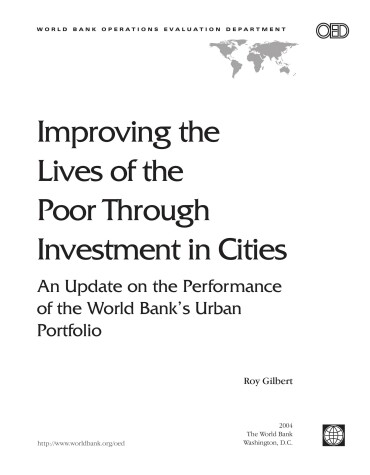World Bank Operations Evaluation Study S.
1 total work
Cities are home to 525 million poor people, and the World Bank makes substantial investments in developing country cities every year. This study reviews the performance of 99 urban development operations completed since 1993 to see, in particular, how these interventions have improved the living conditions of the urban poor, the primary goal of the livability pillar of the World Bank's current urban strategy. Improving the Lives of Poor People by Investing in Cities finds that cities, who hosted World Bank supported urban projects, improved their livability conditions significantly more than similar cities without such projects. These improvements included better basic water, sewerage and solid waste disposal. Factors in the relative success of these urban development projects have been involvement of both beneficiaries and borrowers, without straining their capacities or resources, and the use of lessons from prior experiences. The study also finds however, that despite the promising result, there is still much to learn about how many poor people are served by such projects and how many are not being served.
The study calls for more systematic monitoring and evaluation of the poverty alleviation results of urban development assistance. This is a call echoed by practitioners who agree that knowing more about the results achieved thus far, can better inform assistance to the urban poor in the future.
The study calls for more systematic monitoring and evaluation of the poverty alleviation results of urban development assistance. This is a call echoed by practitioners who agree that knowing more about the results achieved thus far, can better inform assistance to the urban poor in the future.
